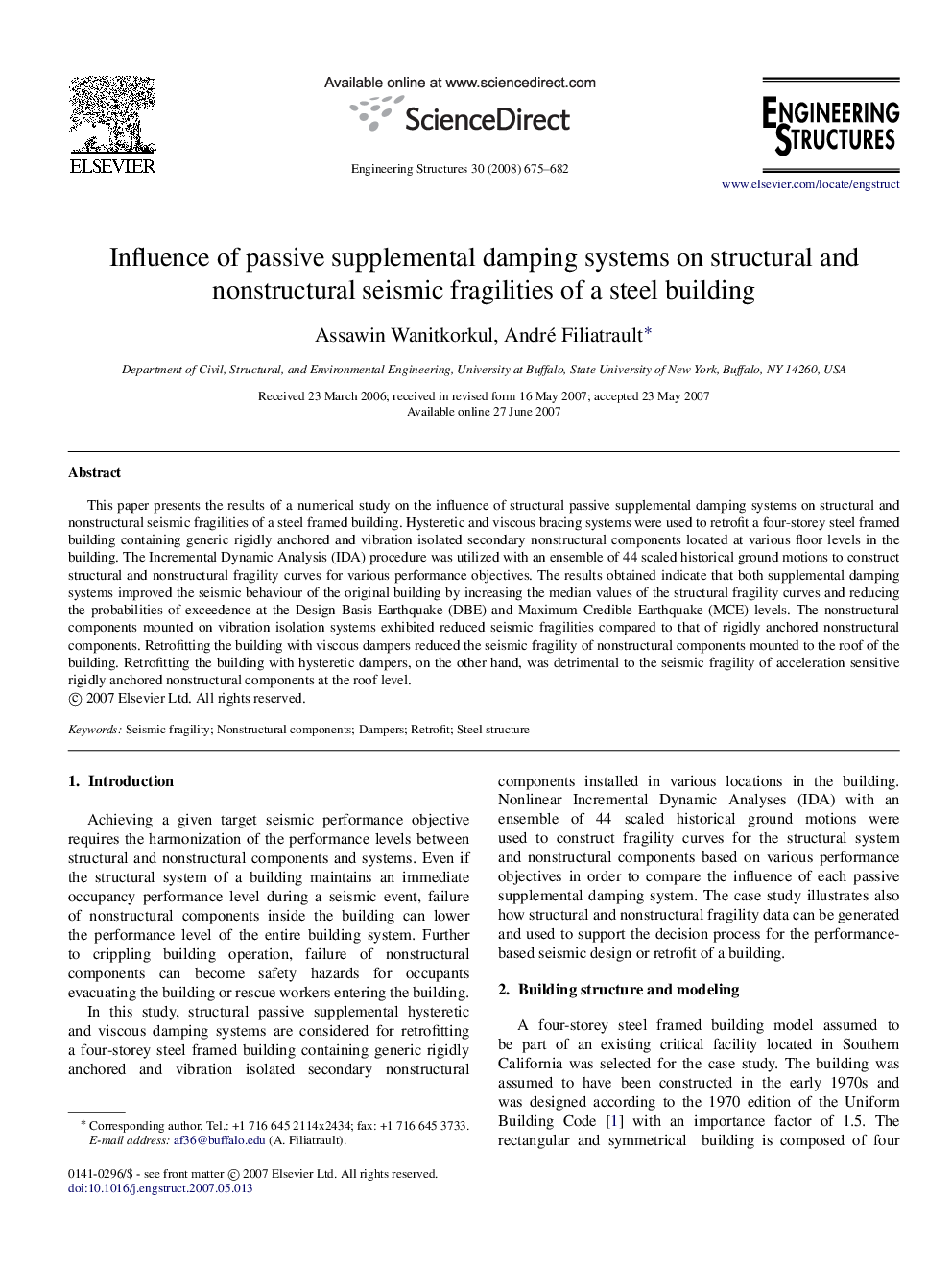| Article ID | Journal | Published Year | Pages | File Type |
|---|---|---|---|---|
| 268649 | Engineering Structures | 2008 | 8 Pages |
This paper presents the results of a numerical study on the influence of structural passive supplemental damping systems on structural and nonstructural seismic fragilities of a steel framed building. Hysteretic and viscous bracing systems were used to retrofit a four-storey steel framed building containing generic rigidly anchored and vibration isolated secondary nonstructural components located at various floor levels in the building. The Incremental Dynamic Analysis (IDA) procedure was utilized with an ensemble of 44 scaled historical ground motions to construct structural and nonstructural fragility curves for various performance objectives. The results obtained indicate that both supplemental damping systems improved the seismic behaviour of the original building by increasing the median values of the structural fragility curves and reducing the probabilities of exceedence at the Design Basis Earthquake (DBE) and Maximum Credible Earthquake (MCE) levels. The nonstructural components mounted on vibration isolation systems exhibited reduced seismic fragilities compared to that of rigidly anchored nonstructural components. Retrofitting the building with viscous dampers reduced the seismic fragility of nonstructural components mounted to the roof of the building. Retrofitting the building with hysteretic dampers, on the other hand, was detrimental to the seismic fragility of acceleration sensitive rigidly anchored nonstructural components at the roof level.
